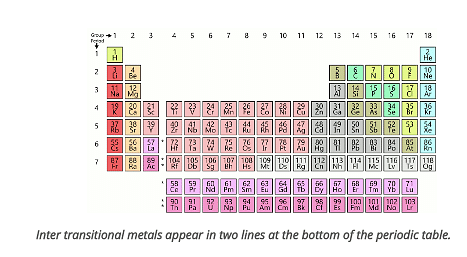The chemistry of the actinoid elements is not so smooth as that of the Lanthanoids. Justify this statement by giving some examples from the oxidation state of these elements.
The chemistry of the actinoid elements is not so smooth as that of the Lanthanoids. Justify this statement by giving some examples from the oxidation state of these elements.
Solution and Explanation
Lanthanoids primarily show three oxidation states (+2, +3, +4). Among these oxidation states, +3 state is the most common. Lanthanoids display a limited number of oxidation states because the energy difference between 4f, 5d, and 6s orbitals is quite large. On the other hand, the energy difference between 5f, 6d, and 7s orbitals is very less. Hence, actinoids display a large number of oxidation states. For example, uranium and plutonium display +3, +4, +5, and +6 oxidation states while neptunium displays +3, +4, +5, and +7. The most common oxidation state in case of actinoids is also +3.
Top Questions on d -and f -Block Elements
- What is the spin magnetic moment of Cr(III) in Bohr Magnetons?
- AIIMS Paramedical - 2025
- Chemistry
- d -and f -Block Elements
- Among the following outermost electronic configurations of transition metals, which one shows the highest oxidation state?
- CBSE CLASS XII - 2025
- Chemistry
- d -and f -Block Elements
- Highest oxidation numbers for chromium and manganese:
- AIIMS Paramedical - 2025
- Chemistry
- d -and f -Block Elements
- Choose the correct ascending order of ionization energy for Zn, Cu, Ag:
- AIIMS Paramedical - 2025
- Chemistry
- d -and f -Block Elements
- Evaluate these statements about transition metals:
- AIIMS Paramedical - 2025
- Chemistry
- d -and f -Block Elements
Questions Asked in CBSE CLASS XII exam
- In a Young’s double-slit experiment, two light waves, each of intensity \( I_0 \), interfere at a point, having a path difference \( \frac{\lambda}{8} \) on the screen. Find the intensity at this point.
- CBSE CLASS XII - 2025
- Interference Of Light Waves And Young’S Experiment
- Using the mirror equation and the formula of magnification, deduce that “the virtual image produced by a convex mirror is always diminished in size and is located between the pole and the focus.”
- CBSE CLASS XII - 2025
- Mirrors and Images
- Find: \[ \int \frac{2x}{(x^2 + 3)(x^2 - 5)} \, dx \]
- CBSE CLASS XII - 2025
- Integration
- If \( \int \frac{1}{2x^2} \, dx = k \cdot 2x + C \), then \( k \) is equal to:
- CBSE CLASS XII - 2025
- Integration
- Two dice are thrown. Defined are the following two events A and B: \[ A = \{(x, y) : x + y = 9\}, \quad B = \{(x, y) : x \neq 3\}, \] where \( (x, y) \) denote a point in the sample space. Check if events \( A \) and \( B \) are independent or mutually exclusive.
- CBSE CLASS XII - 2025
- Probability
Concepts Used:
Lanthanoids

Lanthanoids are at the top of these two-row, while actinoids are at the bottom row.
Properties of Lanthanoids
Lanthanoids are inclusive of 14 elements, with atomic numbers 58-71:
- Cerium - Xe 4f1 5d1 6s2
- Praseodymium - Xe 4f3 6s2
- Neodymium - Xe 4f4 6s2
- Promethium - Xe 4f5 6s2
- Samarium - Xe 4f6 6s2
- Europium - Xe 4f7 6s2
- Gadolinium - Xe 4f7 5d1 6s2
- Terbium - Xe 4f9 6s2
- Dysprosium - Xe 4f10 6s2
- Holmium - Xe 4f11 6s2
- Erbium - Xe 4f12 6s2
- Thulium - Xe 4f13 6s2
- Ytterbium - Xe 4f14 6s2
- Lutetium - Xe 4f14 5d1 6s2
These elements are also called rare earth elements. They are found naturally on the earth, and they're all radioactively stable except promethium, which is radioactive. A trend is one of the interesting properties of the lanthanoid elements, called lanthanide contraction.